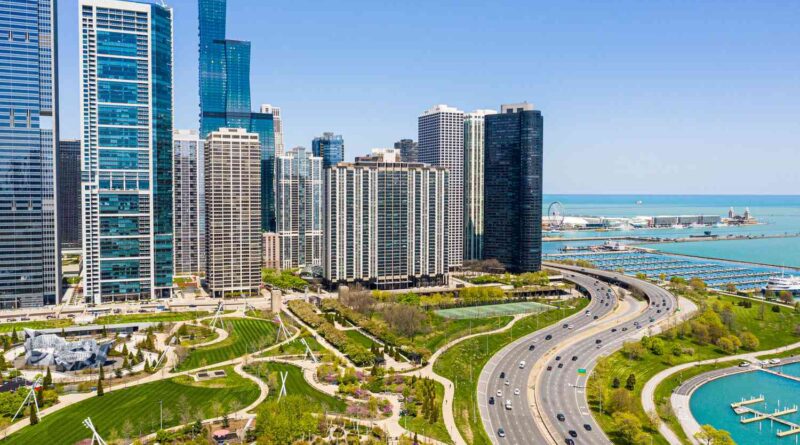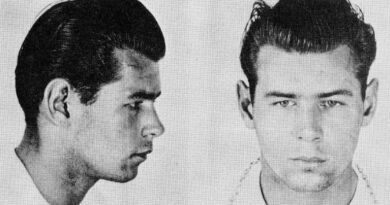History of Chicago Illinois
Chicago, Illinois, often called “The Windy City,” is one of the most iconic and influential cities in the United States. Located on the southwestern shore of Lake Michigan, Chicago has played a significant role in the economic, cultural, and social development of the nation. From its humble beginnings as a frontier outpost to its rise as a global metropolis, Chicago’s history is rich with stories of innovation, resilience, and transformation. This article explores the key events and milestones that have shaped Chicago into the city it is today.
Early Indigenous Inhabitants
Long before European settlers arrived, the area that would become Chicago was inhabited by various Native American tribes, including the Potawatomi, Miami, and Illinois. These tribes thrived in the region, benefiting from the rich natural resources provided by the rivers, lakes, and forests. The Potawatomi, in particular, were the dominant group by the time Europeans arrived, and they established several villages in the area. The name “Chicago” is believed to be derived from the Algonquin word “shikaakwa,” which refers to wild onions, garlic or leeks that grew abundantly in the region. This produced a pungent smell in the area.
The Arrival of European Settlers
The first recorded European to explore the Chicago area was French explorer Louis Jolliet and Jesuit missionary Father Jacques Marquette in 1673. They were followed by other French explorers, fur traders, and missionaries who established trading posts and missions throughout the region. However, it wasn’t until the late 18th century that European settlement began in earnest.
In 1779, Jean Baptiste Point du Sable, a Haitian of African and French descent, established the first permanent non-native settlement in what is now Chicago. Du Sable’s trading post, located at the mouth of the Chicago River, became a vital hub for trade and commerce in the region. Often referred to as the “Father of Chicago,” Du Sable played a crucial role in the early development of the city.
The Founding of Chicago
Chicago was officially founded on August 12, 1833, when the town was incorporated with a population of just 350 people. Its strategic location on the Chicago River, near the southwestern tip of Lake Michigan, made it an ideal spot for trade and transportation. The construction of the Illinois and Michigan Canal, which connected the Great Lakes to the Mississippi River, further solidified Chicago’s position as a key transportation hub.
The city’s growth was rapid, fueled by the influx of settlers moving westward and the expansion of the nation’s transportation network. By 1837, Chicago had grown large enough to be incorporated as a city. Its population continued to swell, reaching over 4,000 residents by the end of the decade.
The Great Chicago Fire of 1871
One of the most defining events in Chicago’s history is the Great Chicago Fire of 1871. The fire began on the evening of October 8, 1871, in a barn owned by the O’Leary family, though the exact cause remains a matter of speculation. Fueled by dry weather, wooden buildings, and strong winds, the fire quickly spread across the city, destroying approximately 17,500 buildings and leaving around 100,000 people homeless.
Despite the devastation, the Great Chicago Fire marked a turning point in the city’s history. The disaster prompted a massive rebuilding effort, and the city emerged stronger and more resilient. The fire also led to the development of stricter building codes and the use of fire-resistant materials, setting the stage for Chicago’s future as a leader in architectural innovation.
Rebuilding and the Birth of the Skyscraper
In the aftermath of the Great Chicago Fire, the city underwent a remarkable transformation. Architects and builders flocked to Chicago, eager to take part in the city’s reconstruction. This period of rebuilding coincided with the advent of new technologies and construction techniques, leading to the birth of the skyscraper.
The Home Insurance Building, completed in 1885, is often considered the world’s first skyscraper. Designed by architect William Le Baron Jenney, the building featured a steel-frame construction that allowed it to reach unprecedented heights. This innovation laid the foundation for modern skyscrapers and established Chicago as a global center of architectural design.
Chicago’s skyline continued to evolve, with iconic structures like the Chicago Board of Trade Building, the Tribune Tower, and the Wrigley Building defining the city’s architectural identity. The city’s embrace of modern architecture was further solidified by the 1893 World’s Columbian Exposition, which showcased the talents of some of the nation’s leading architects and planners.
The World’s Columbian Exposition of 1893
The World’s Columbian Exposition, also known as the Chicago World’s Fair, was held in 1893 to celebrate the 400th anniversary of Christopher Columbus’s arrival in the Americas. The exposition was a monumental event, attracting millions of visitors from around the world and putting Chicago on the global stage.
Held in Jackson Park, the fair covered more than 600 acres and featured over 200 buildings designed in the neoclassical style, collectively known as the “White City.” The exposition showcased the latest technological advancements, cultural exhibits, and entertainment, including the debut of the Ferris wheel.
The fair had a lasting impact on Chicago, influencing its architecture, urban planning, and cultural institutions. It also cemented the city’s reputation as a center of innovation and progress.
The Rise of Chicago as an Industrial Powerhouse
By the late 19th and early 20th centuries, Chicago had become a major industrial powerhouse, driven by its strategic location, transportation infrastructure, and abundant labor force. The city’s stockyards, factories, and steel mills were among the largest in the world, earning Chicago the nickname “The City of the Big Shoulders,” as coined by poet Carl Sandburg.
Chicago’s position as a transportation hub was further strengthened by the expansion of the railroads and the opening of the Chicago River’s Sanitary and Ship Canal in 1900. This canal reversed the flow of the Chicago River, preventing pollution from entering Lake Michigan and improving the city’s sanitation.
The city’s industrial growth attracted waves of immigrants from Europe, as well as African Americans from the South during the Great Migration. These new residents contributed to the city’s cultural diversity and played a vital role in its economic development.
The Impact of the Great Migration
The Great Migration, which began in the early 20th century, saw millions of African Americans move from the rural South to northern cities like Chicago in search of better economic opportunities and escape from racial discrimination. Chicago’s African American population grew significantly during this period, particularly in neighborhoods like Bronzeville, which became a vibrant cultural and economic center.
The influx of African Americans brought about significant social and cultural changes in Chicago. The city became a hub for jazz, blues, and other forms of African American music, contributing to the development of Chicago’s rich musical heritage. The Great Migration also gave rise to a thriving black middle class and spurred the growth of African American-owned businesses, churches, and social organizations.
However, the migration also brought challenges, including racial tension and segregation. The 1919 Chicago Race Riot, one of the worst race riots in American history, highlighted the deep-seated racial divisions in the city. Despite these challenges, the African American community in Chicago played a crucial role in shaping the city’s cultural and political landscape.
The Prohibition Era and the Rise of Organized Crime
The Prohibition era, from 1920 to 1933, was a tumultuous time in Chicago’s history. The nationwide ban on the sale, production, and distribution of alcohol led to the rise of organized crime in the city. Chicago became infamous for its gangsters, most notably Al Capone, who controlled much of the city’s illegal alcohol trade.
Capone’s criminal empire was marked by violence, corruption, and a blatant disregard for the law. The St. Valentine’s Day Massacre in 1929, in which seven members of a rival gang were gunned down, remains one of the most notorious events of this era. Despite his criminal activities, Capone was seen by some as a Robin Hood figure, and he even gained a degree of celebrity status.
The Prohibition era left a lasting legacy on Chicago, shaping its image as a city of both opportunity and danger. The period also had a significant impact on the city’s economy, law enforcement, and politics, with many of the era’s criminal figures becoming part of Chicago’s folklore.
The Great Depression and the New Deal
The Great Depression of the 1930s had a profound impact on Chicago, as it did on the rest of the country. The city’s industrial base was hit hard by the economic downturn, leading to widespread unemployment, poverty, and social unrest. Shantytowns, known as “Hoovervilles,” sprang up across the city, and many Chicagoans struggled to make ends meet.
In response to the crisis, the federal government implemented New Deal programs to provide relief, recovery, and reform. Chicago benefited from these programs, which created jobs, built infrastructure, and provided social services to those in need. The construction of public works projects, such as the expansion of Chicago’s parks and the building of public housing, helped to revitalize the city and lay the groundwork for its future growth.
The Great Depression also had a lasting impact on Chicago’s political landscape. The city’s Democratic Party, led by Mayor Anton Cermak, gained power by building a coalition of ethnic groups, labor unions, and African Americans. This political machine, later known as the “Chicago Democratic Machine,” would dominate the city’s politics for much of the 20th century.
World War II and Postwar Boom
World War II brought significant changes to Chicago, as the city became a center for war production. Factories that had once produced consumer goods were converted to manufacture military equipment, and Chicago’s workforce expanded to meet the demands of the war effort. The war also accelerated the migration of African Americans to the city, as they sought jobs in the defense industry.
The postwar period was a time of economic growth and prosperity for Chicago. The city’s population reached its peak in the 1950s, and new industries, such as electronics and telecommunications, emerged alongside traditional manufacturing. The construction of expressways and the expansion of O’Hare International Airport facilitated the city’s growth and connected Chicago to the rest of the country and the world.
However, the postwar boom also brought challenges, including the decline of manufacturing, racial segregation, and urban decay. The construction of public housing projects, such as the infamous Cabrini-Green, aimed to address the housing shortage but also contributed to the concentration of poverty and crime in certain areas of the city.
The Civil Rights Movement and Social Change
The civil rights movement of the 1960s brought significant social and political change to Chicago. African American leaders, such as Martin Luther King Jr., came to the city to advocate for civil rights, fair housing, and an end to segregation. Chicago became a focal point for the movement, with marches, protests, and voter registration drives aimed at challenging the status quo.
One of the most significant events of this period was the Chicago Freedom Movement, led by Dr. King and the Southern Christian Leadership Conference (SCLC). The movement sought to address issues such as housing discrimination, school segregation, and economic inequality in Chicago. While the movement faced significant resistance, it helped to raise awareness of the systemic racism in the city and laid the groundwork for future reforms.
The 1968 Democratic National Convention, held in Chicago, further highlighted the city’s role in the national struggle for civil rights and social change. The convention was marked by violent clashes between police and anti-war protesters, leading to widespread criticism of the city’s handling of the situation and further fueling the demand for change.
The Decline of Industry and Urban Renewal
The latter half of the 20th century was a period of significant change for Chicago, as the city grappled with the decline of its industrial base and the challenges of urban renewal. The closure of factories, steel mills, and stockyards led to job losses and economic decline in many parts of the city. The population began to decline, and many neighborhoods faced issues such as poverty, crime, and disinvestment.
In response to these challenges, Chicago embarked on a series of urban renewal projects aimed at revitalizing the city’s economy and infrastructure. The construction of new office buildings, shopping centers, and cultural institutions, such as the Willis Tower (formerly Sears Tower) and the John Hancock Center, helped to modernize the city’s skyline and attract new businesses and residents.
The city also invested in public transportation, parks, and cultural institutions, such as the creation of Millennium Park and the renovation of the Art Institute of Chicago. These efforts helped to revitalize downtown Chicago and make it a vibrant center of culture, commerce, and tourism.
The Rise of Modern Chicago
Today, Chicago is a global city known for its diverse economy, cultural institutions, and vibrant neighborhoods. The city has continued to evolve, embracing new industries such as technology, finance, and healthcare, while maintaining its role as a transportation and logistics hub.
Chicago is also a leader in education, with world-class universities such as the University of Chicago and Northwestern University. The city’s cultural scene is thriving, with renowned museums, theaters, and music venues that attract visitors from around the world.
Despite its challenges, including issues related to crime, segregation, and inequality, Chicago remains a dynamic and resilient city. Its history of innovation, diversity, and perseverance continues to shape its identity and influence its future.
Conclusion
The history of Chicago is a story of transformation, resilience, and progress. From its early days as a frontier settlement to its rise as a global metropolis, Chicago has played a pivotal role in the development of the United States. Its contributions to industry, architecture, culture, and social change have left a lasting legacy that continues to influence the city and the nation.
As Chicago moves forward, it will undoubtedly face new challenges and opportunities. But if history is any guide, the city will continue to adapt, innovate, and thrive, building on the foundation laid by generations of Chicagoans who have made it the remarkable city it is today.
Discover more from City Towner
Subscribe to get the latest posts sent to your email.




